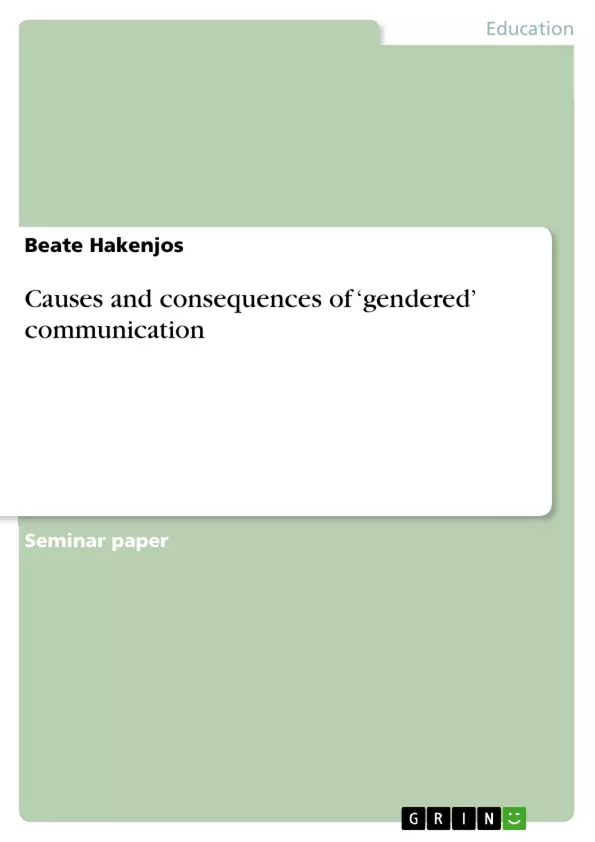As Donna Haraway states, all the modern feminist meanings of gender, despite differences, have roots in Simone de Beauvoir’s claim that ‘one is not born a woman’ (de Beauvoir, 1949; 1952, p.249) and in post-Second World War social conditions. Those conditions have enabled constructions of women as a collective historical subject-in-process. The concept of Gender was developed to question and contest the naturalization of sexual difference in multiple areas of struggle. “Feminist theory and practice around gender seek to explain and change historical systems of sexual difference, whereby ‘men’ and ‘women’ are socially constructed and positioned in relations of hierarchy and antagonism.” (Haraway 1991). The refusal to become or to remain a ‘gendered’ ‘woman’ or ‘man’ is a political challenge also against the imaginary narrative of sex and race. Gender refers primarily but not exclusively to women. It defines the term ‘women’ as a very broad and internally differentiated category that includes differences as the highly relevant variables of class, ethnicity, religion, sexual orientation and age. Of interest are the visible and invisible power mechanisms that influence women’s access to responsibility in social, economic, political, religious, intellectual and cultural life. “Male” and “female” are culturally produced, socially constructed categories and language is often seen as part of what constructs, maintains and reflects these categories. But on the other hand, we need categories to be able to analyse, study and describe in order to find solutions for change. Gender is transdisciplinary and a study of language, that is an essential basis for active participation in society is important. Today’s gender topics are not only of importance for ‘women’. In a continuously changing society they are also of concern for ‘men’ and require their active participation in a restructuring of society. A discussion and (re)negotiation of these issues needs participants who can and will take part equally. Over time, different approaches were developed to interpret differences in communication style between ‘men’ and ‘women’. In the first part of this work I will try to find out: What are the causes for gender-related variation? In the second part I will look at two case studies, “Complaint stories” by Susanne Günthner and “TV discussions” by Helga Kotthoff, in order to answer the intertwined question: What are the consequences of gender-related variation?
Table of Contents
- Introduction
- Causes of 'gendered' communication
- Gender, Language and Communicative Competence
- Approaches to explain gender-related variation
- The Deficit Approach and the Dominance Approach
- The Difference Approach and Cultural Psychology
- The Constructivist Approach
- Consequences of 'gendered' communication
- "Complaint Stories" – A 'female' communicative genre
- Asymmetrical 'gendered' communication in TV discussions
- Conclusion
Objectives and Key Themes
This work explores the causes and consequences of 'gendered' communication. It investigates how language reflects and shapes gender divisions in society, analyzing different theoretical approaches to explaining this phenomenon. The text aims to provide a comprehensive overview of the topic, exploring both historical and contemporary perspectives. The main themes of the work include: * **The relationship between language and gender**: How language reflects and contributes to the social construction of gender. * **Theoretical approaches to understanding gendered communication**: Analyzing the Deficit, Dominance, Difference, and Constructivist approaches. * **The impact of gendered communication**: Examining the consequences of gendered communication patterns on individuals and society. * **The role of communicative competence in shaping gendered communication**: Exploring the influence of social norms and expectations on the development of communicative skills. * **Specific case studies**: Analyzing "Complaint Stories" and TV discussions as examples of gendered communication patterns.Chapter Summaries
The first chapter introduces the concept of gender as a socially constructed category and explores Simone de Beauvoir's influential notion of "one is not born a woman." It discusses the impact of post-World War II social conditions on the development of feminist theory and the challenges of challenging the naturalization of sexual difference. Chapter two explores the causes of gender-related variation in communication style. It examines three key perspectives: the Deficit, Dominance, Difference, and Constructivist approaches. This chapter analyzes how language reflects, shapes, and interacts with social structures in relation to gender, highlighting the concept of communicative competence and its role in shaping gendered communication patterns. Chapter three delves into the consequences of gendered communication. It examines two specific case studies: Susanne Günthner's research on "Complaint Stories" and Helga Kotthoff's analysis of asymmetrical 'gendered' communication in TV discussions. These studies provide concrete examples of how gendered communication patterns play out in real-world contexts.Keywords
The central keywords and focus topics of this work are: gender, language, communication, communicative competence, social construction, gendered communication, deficit approach, dominance approach, difference approach, constructivist approach, complaint stories, TV discussions, gendered variation. The work investigates the interplay between language, gender, and social structures, exploring both the causes and consequences of gendered communication patterns.- Quote paper
- Beate Hakenjos (Author), 2008, Causes and consequences of ‘gendered’ communication, Munich, GRIN Verlag, https://www.grin.com/document/133153



